32 Best Golfers Of The 90s
The 1990s was the decade Tiger Woods joined the pro ranks, but who were the best golfers of the 90s?
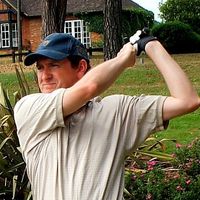
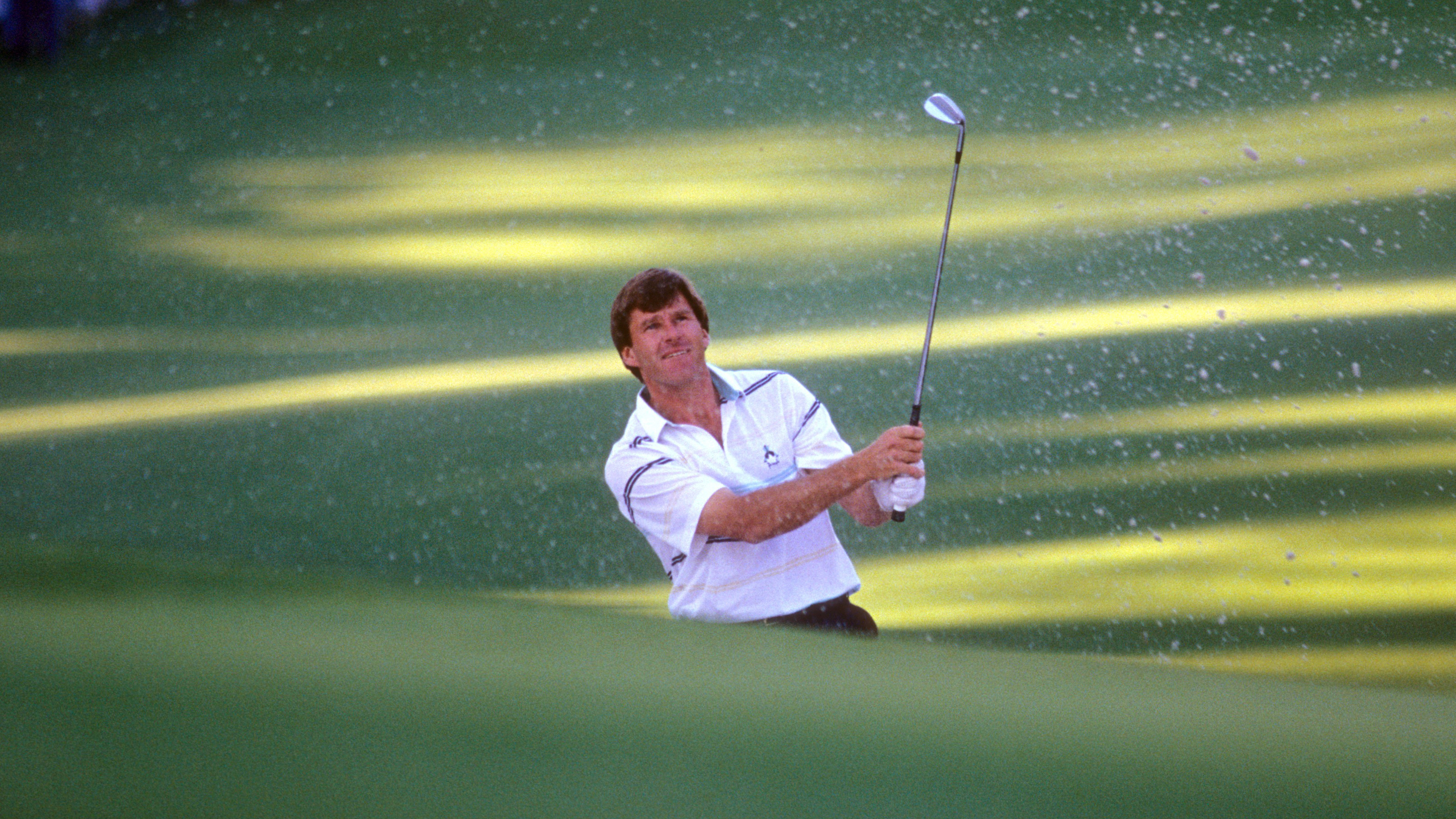
The 1990s saw great changes in top-level golf. Prize money rocketed during this decade. When Corey Pavin topped the PGA Tour money list for 1991 he did so with winnings of $979,430. When Tiger Woods did the same in 1999 the corresponding figure was $6,616,585. Equipment also changed, with metal woods coming in, ball technology moving on and graphite shafts becoming common. But who were the leading golfers during that decade who were playing through these changes in the golfing landscape?
Alison Nicholas
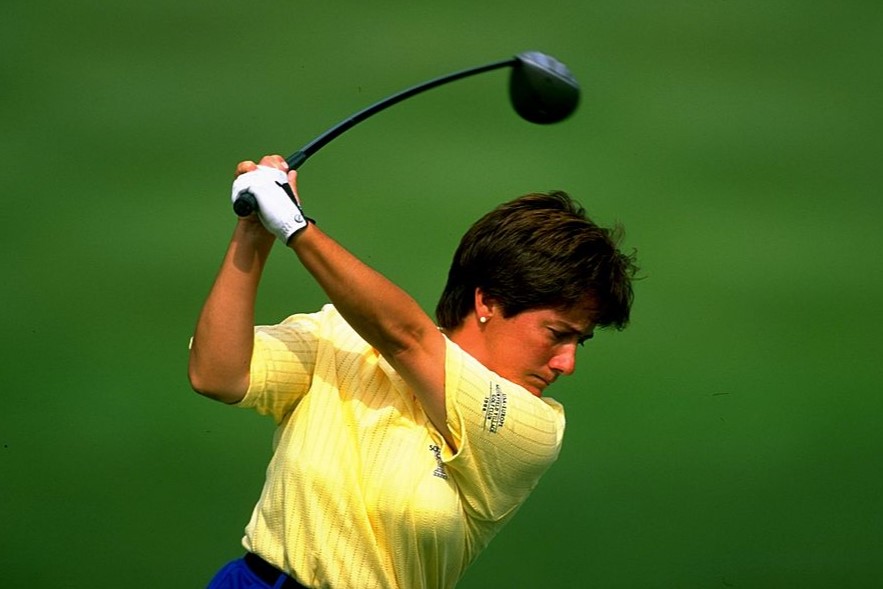
Gibraltar-born Alison Nicholas won the U.S. Women’s Open in 1997 at Pumpkin Ridge. She overcame Nancy Lopez by a shot despite Lopez becoming the first player to shoot all four rounds in the 60s in a U.S. Women's Open. That year Nicholas won The Association of Golf Writers Trophy, Ladies European Tour Players' Player of the Year and Sunday Times Sportswomen of the Year. Nicholas won four times on the LPGA Tour in the Nineties and four times on the Ladies European Tour. She was an ever-present on Europe’s Solheim Cup team during the decade.
Paul Azinger
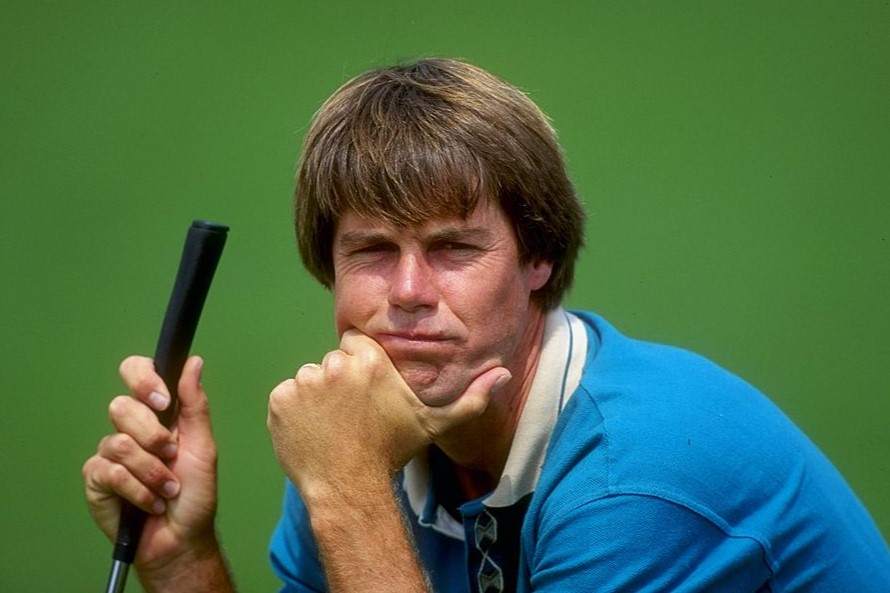
Paul Azinger won half a dozen times in the Nineties culminating in his victory at the PGA Championship when he defeated Greg Norman in a playoff. He also won twice on the European Tour, claiming the International Open in 1990 and 1992. Then in late 1993 he was diagnosed with with cancer in his right shoulder, which involved six months of chemotherapy and five weeks of radiation as part of his treatment. He was able to resume his tournament career, but did not win again until 2000.
Helen Alfredsson
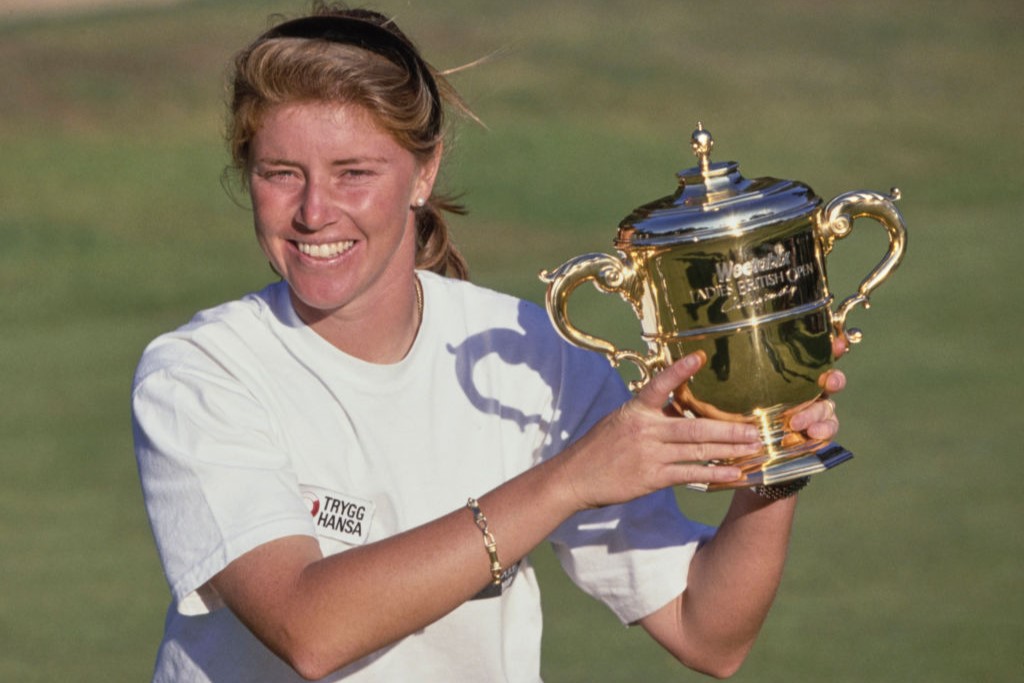
The Swede started her professional touring career on the Ladies European Tour in 1989, and on the LPGA Tour in 1992, when she was awarded Rookie of the Year. She won the Women’s British Open in 1990, but at the time it was not counted as an LPGA Major. She also won the Evian Masters of 1994 and 1998, which was also before that tournament enjoyed Major status. Therefore her one Major Championship victory is the Dinah Shore which she won in 1993. This was her maiden victory on the LPGA tour.
Bernhard Langer
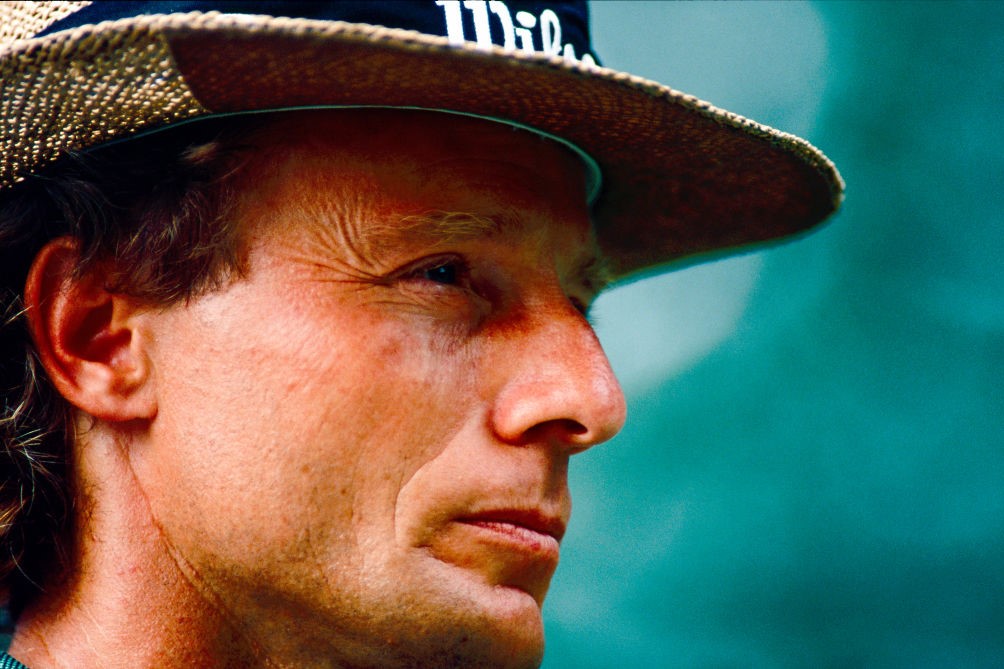
In 1993 Bernhard Langer won his second Masters title, finishing four shots clear of the field. That year he was named European Tour Golfer of the Year. He also finished third in that year’s Open Championship. He was never to win The Open, coming second twice and third four times. He won 18 times on the European Tour during the decade, including winning the PGA Championship at Wentworth in 1993 and 1995. In 1990 he won the world cup with Torsten Giedeon.
Karrie Webb
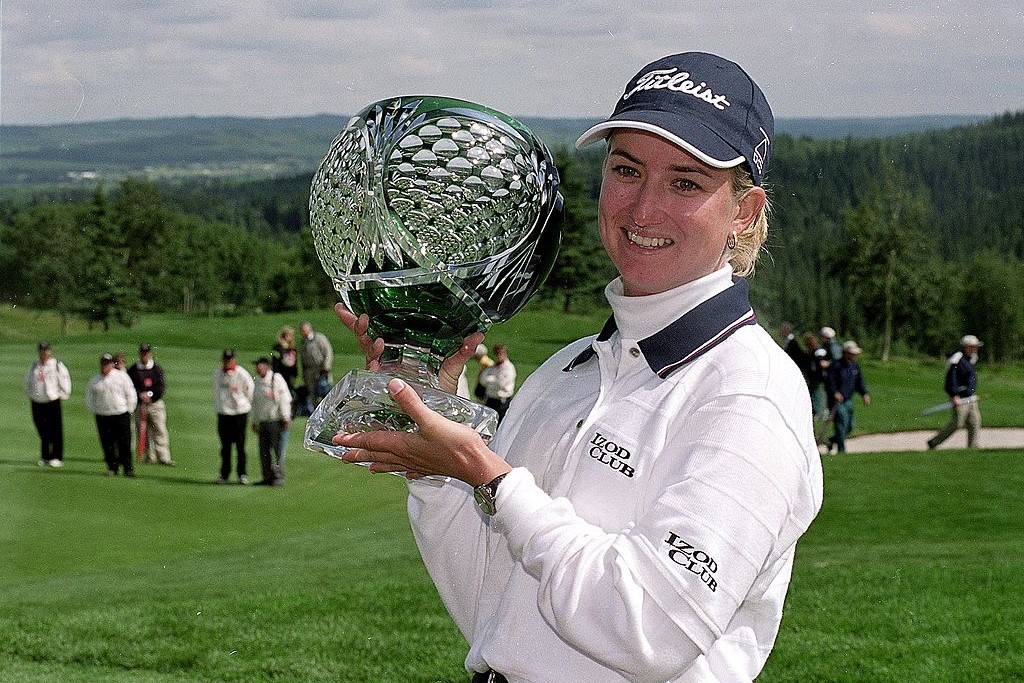
Australian Karrie Webb turned professional in 1994. In 1995 she was Ladies European Tour Rookie of the Year. In 1996 she was LPGA Rookie of the Year and Tour Money Winner; in 1997 she won LPGA Vare Trophy, for the lowest scoring average for the season; in 1999 she was the LPGA Tour Money Winner and also won the LPGA Tour Player of the Year award and won the Vare Trophy again. In 1999 she also won the first of her seven Majors, the du Maurier Classic.
Justin Leonard
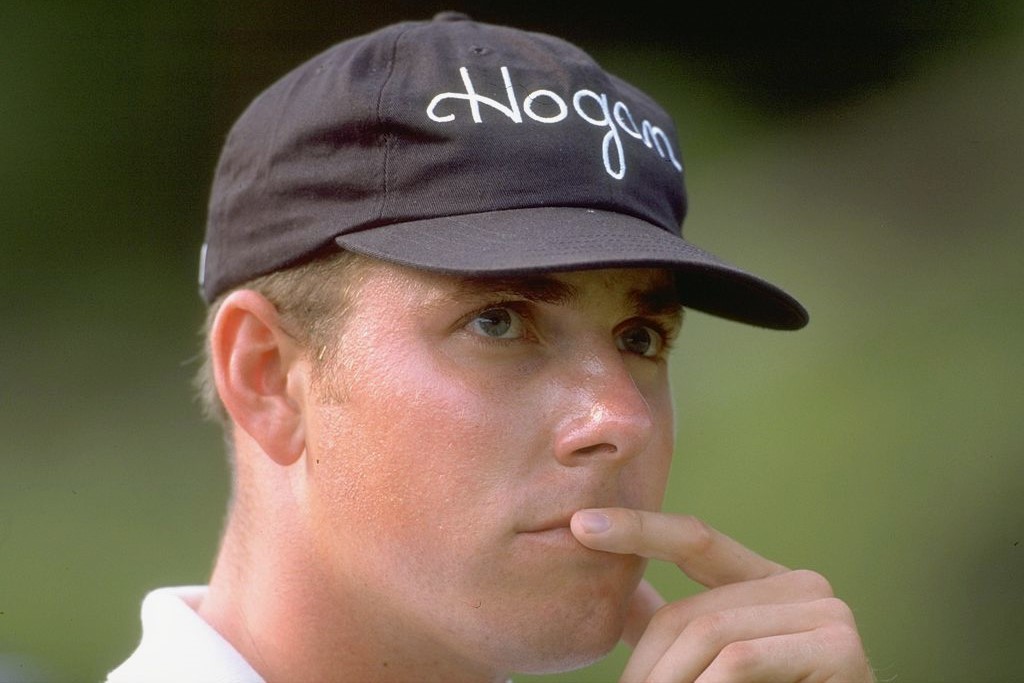
Justin Leonard won the U.S. Amateur Championship in 1992 and was Low Amateur at the U.S. Open of 1993. He turned pro on leaving college in 1994. In the Open Championship of 1997 at Royal Troon he was five shots off the lead going into the final round. He made six birdies on the front nine, added two more on the 16th and 17th holes and won by two shots after his final round 65. He was runner up in the next Major, the PGA Championship. He was also runner up in the notorious 1999 Open at Carnoustie when he lost out out in a three-way playoff.
Subscribe to the Golf Monthly newsletter to stay up to date with all the latest tour news, equipment news, reviews, head-to-heads and buyer’s guides from our team of experienced experts.
Davis Love III
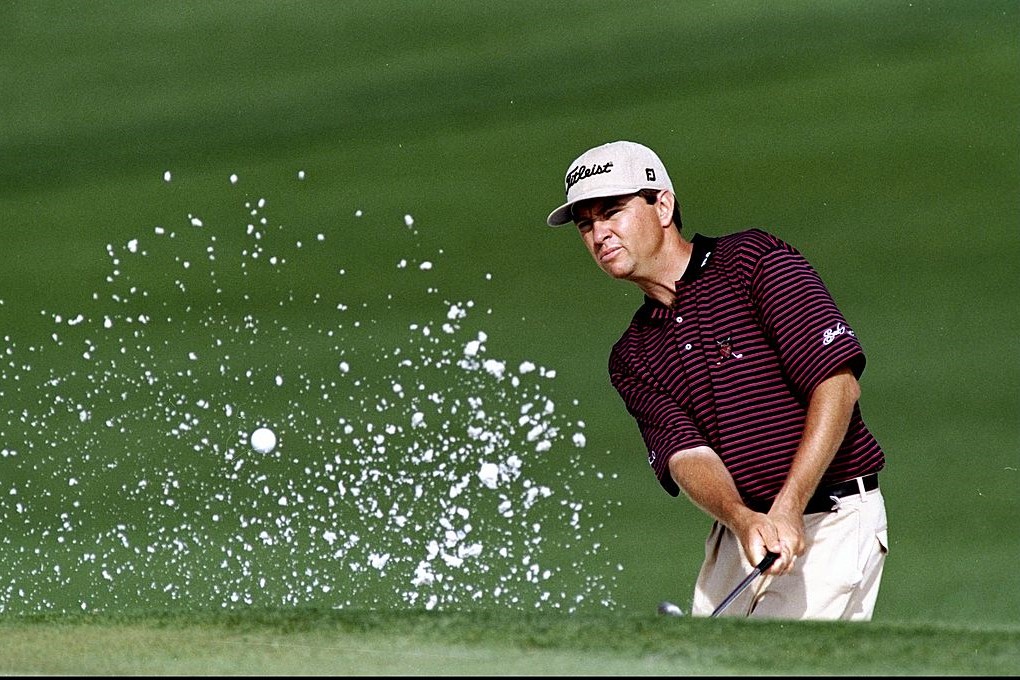
When Davis Love III won the 1997 PGA Championship at Winged Foot it was with a score of 11 under par, which was five shots better than anyone else. Indeed only three other golfers scored under par. He was the last man to win a Major using a wooden-headed driver. He won the Players Championship in 1992, one of the dozen tournaments he won on the PGA Tour in the Nineties. He also won once on the PGA Tour of Japan. He finished runner up in the Masters in 1995 and 1999, and in the U.S. Open in 1996.
Vijay Singh
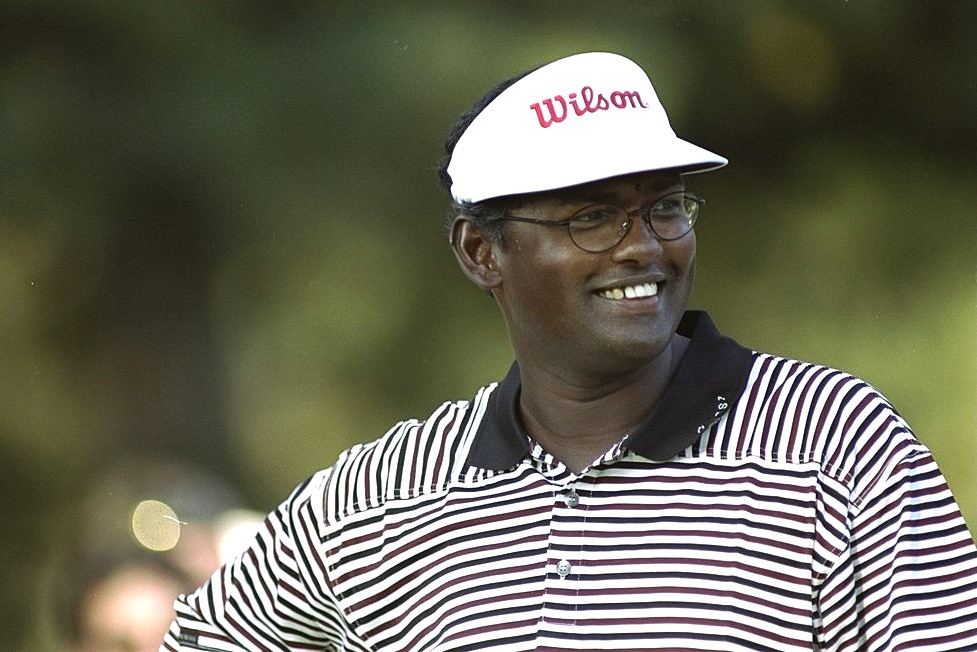
The 6 foot 2 inch Fijian won the PGA Championship in 1998 at Sahalee, equalling the course record in the process with with his second round 66. It was the first of his three Majors. PGA Tour Rookie of the year in 1993, he won eight times on the PGA Tour in the 1990s, seven times on the European Tour, twice on the Southern Africa Tour, once on the Asian Tour and once on Asia Golf Circuit. He won the World Match Play Championship in 1997 at Wentworth, beating Ernie Els in the final.
Tom Lehman
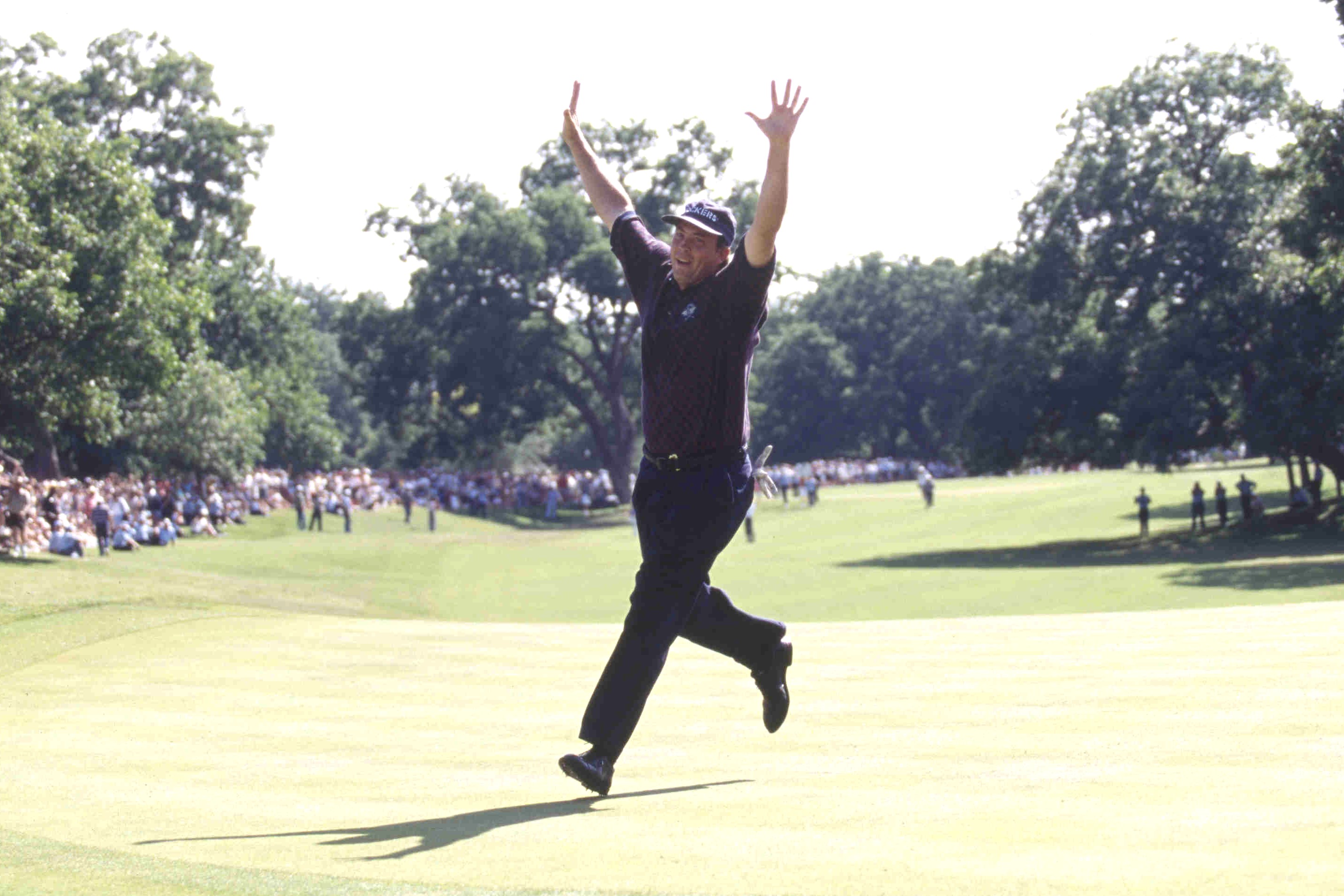
For one week in 1997, from April 20 to 26 to be precise, Tom Lehman was officially the best golfer in the world. He has an unusual golfing CV for a World No. 1 – he won only four regular events in his whole career on the PGA Tour, and one on the European Tour. But he also won the 1996 Open Championship. He was better at coming second than first – he had 19 runner-up finishes on tour. In 1995, 1996 and 1997 at the U.S. Open Lehman held the 54-hole lead. But he finished 3rd, tied 2nd and 3rd respectively.
Brandie Burton
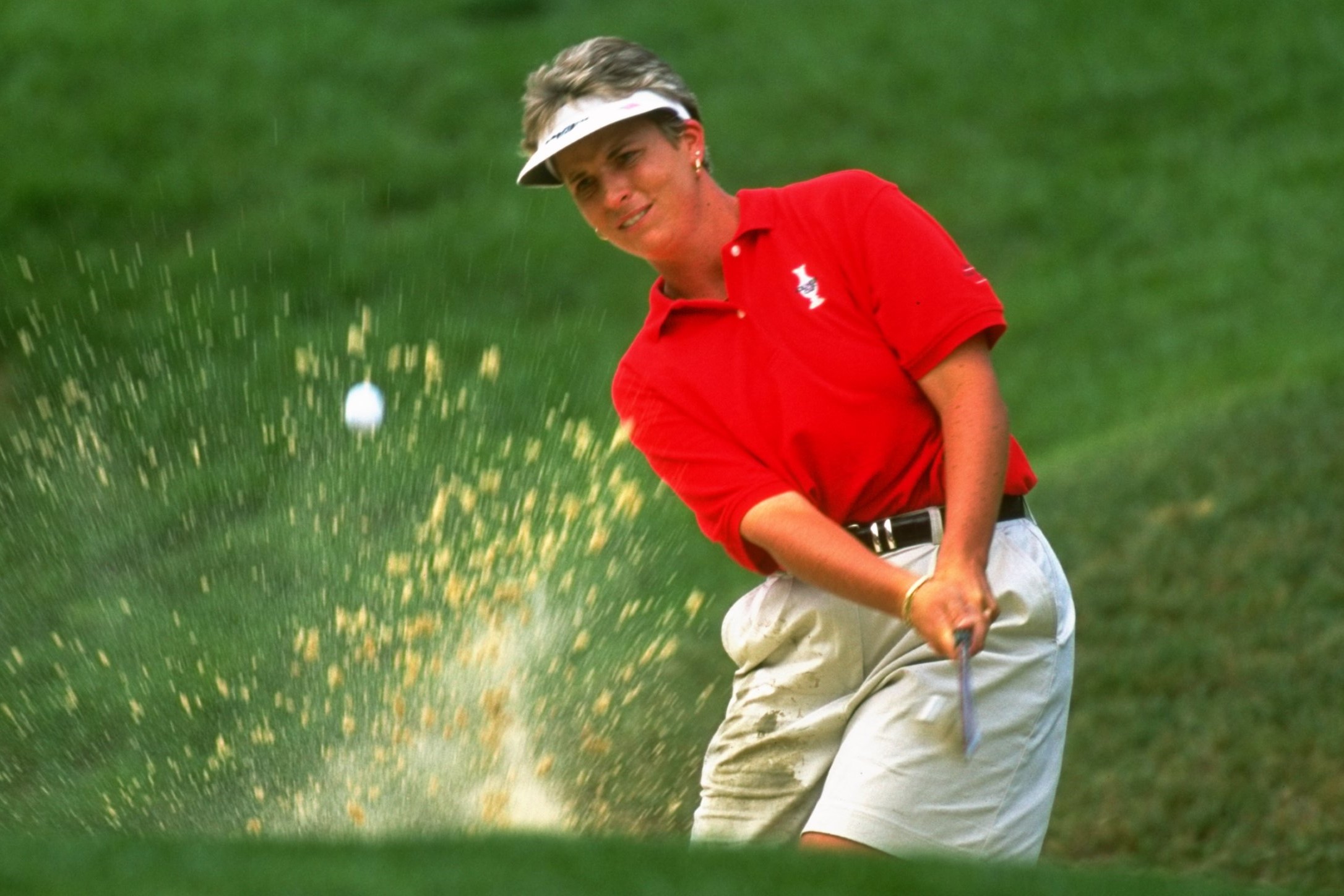
After an amateur career which had included winning the Junior World Golf Championships twice, the U.S. Girls’ Junior and being runner up in the 1989 U.S. Women’s Amateur and playing on the victorious US Curtis Cup side in 1990, in which she won all of her three matches, Brandie Burton turned professional. She was LPGA Tour Rookie of the Year in 1991. She won two Majors, the du Maurier Classics of 1993, when she beat Betsy King in a playoff, and 1998.
Meg Mallon
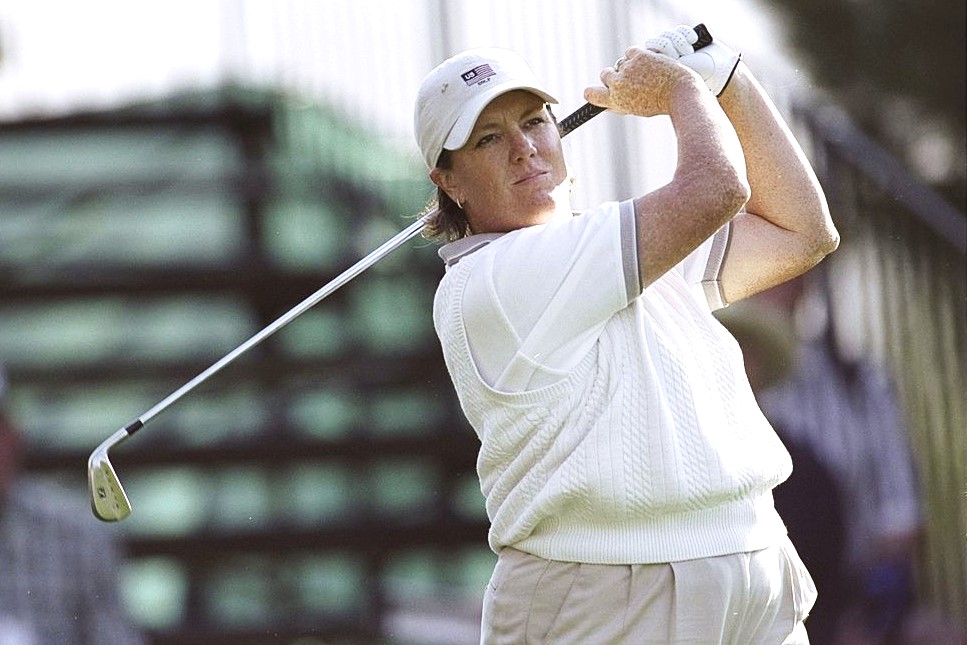
Meg Mallon began playing golf when she was seven years old. She joined the LPGA Tour in 1987 and had a breakthrough year in 1991 when she had her first victories, with four wins coming that season including in two of that year’s Majors, the LPGA Championship and the U.S. Women's Open. She had sixteen top-10 finishes in Majors that decade which, as well as her two wins, included second places at the US Women’s Open in 1995 and the Dinah Shore in 1999.
Juli Inkster
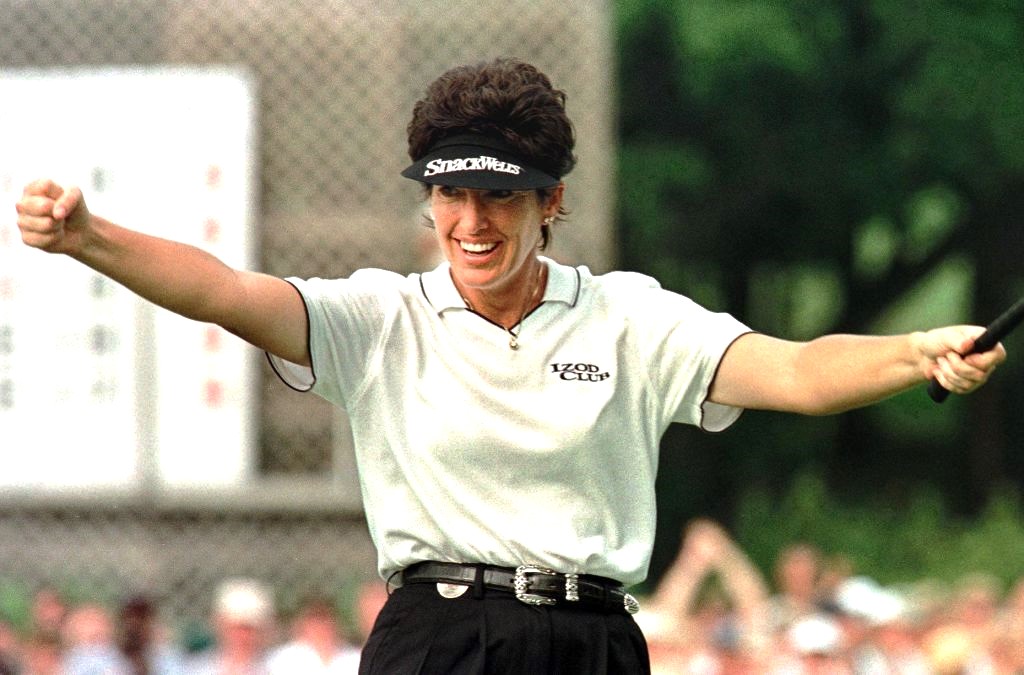
Between March and September 1999, Juli Inkster won six times on the LPGA Tour. These wins included the U.S. Women’s Open and the LPGA Championship, the third and fourth of the seven Major championships she won during her career, and both were secured with scores of 16 under par, which gave her margins of victory of five and four strokes respectively. In the other two Majors that year she came 3rd and 6th. She came second on the LPGA Tour money list that season, her best finish.
Corey Pavin
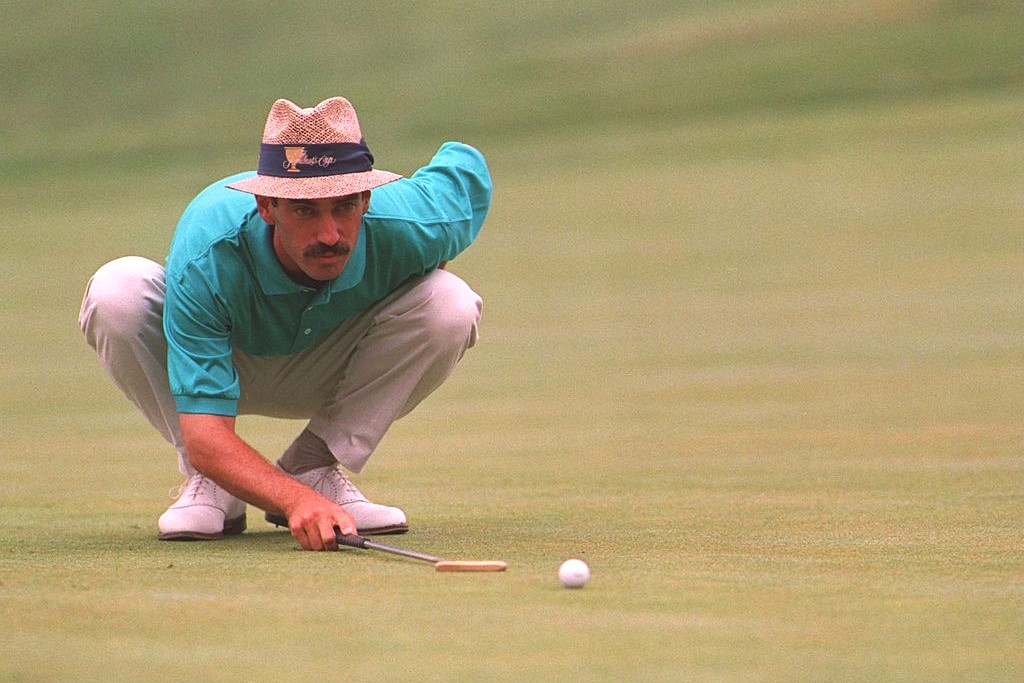
Corey Pavin topped PGA Tour's money list in 1991. In 1992 he came third at the Masters and in 1994 he was runner up in the PGA Championship, six shots behind wire-to-wire winner Nick Price. In 1995 he went into the final round of the US Open at Shinnecock Hills three shots behind Tom Lehman and Greg Norman. Pavin is remembered for his 4-wood on the final hole, which he hit from 228 yards to within a few feet of the hole, and for him running down the fairway arms aloft in celebration as the ball was still on its journey. He won by two shots.
Seve Ballesteros
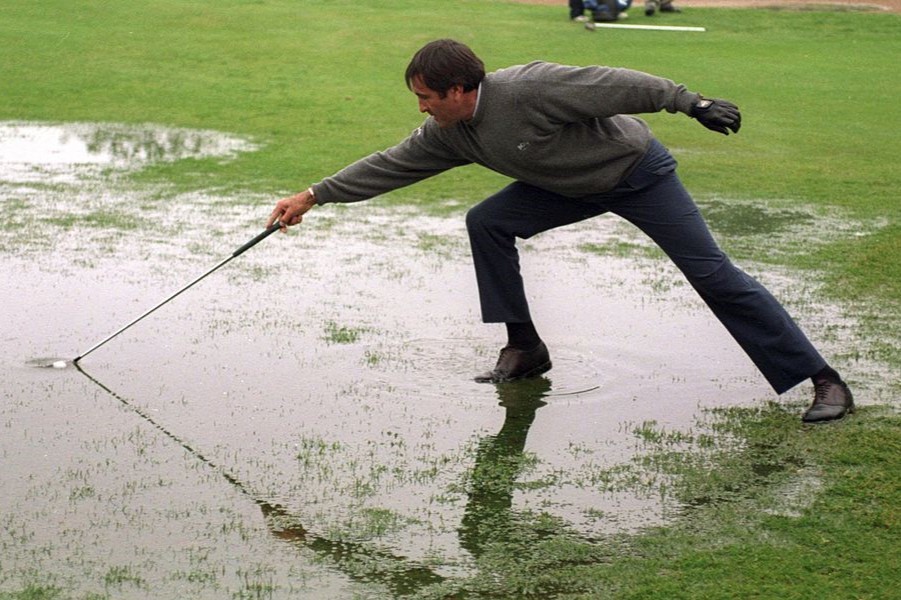
Severiano Ballesteros’ peak years were before the Nineties, but he was still one of the leading golfers entering this decade and in 1991 the charismatic Spaniard won his second European Tour Order of Merit. His winnings of £545,353 that year were more than £150,000 of his nearest rival. He also won the tour’s flagship event that year, the PGA Championship at Wentworth. He won eight times in this decade with his final win on the European Tour coming in May 1995. It was, appropriately enough, the Spanish Open.
Fred Couples
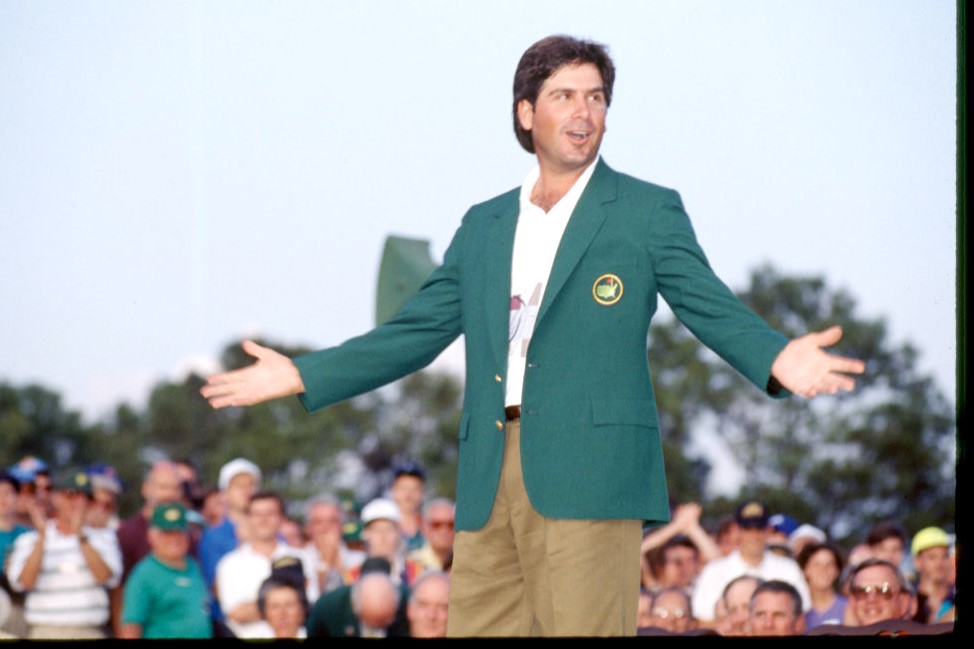
Fred Couples became World No. 1 on March 22, 1992, the first American player to be No. 1 since the rankings had been introduced in April 1986. He stayed there just the week before Nick Faldo displaced him. Faldo lasted just a week in turn before Couples regained top spot, with Couples staying No. 1 for 15 weeks before Faldo again supplanted him. During this second spell as World No. 1, Couples won his only Major, the Masters. He also won the Players Championship in 1996.
Lee Janzen
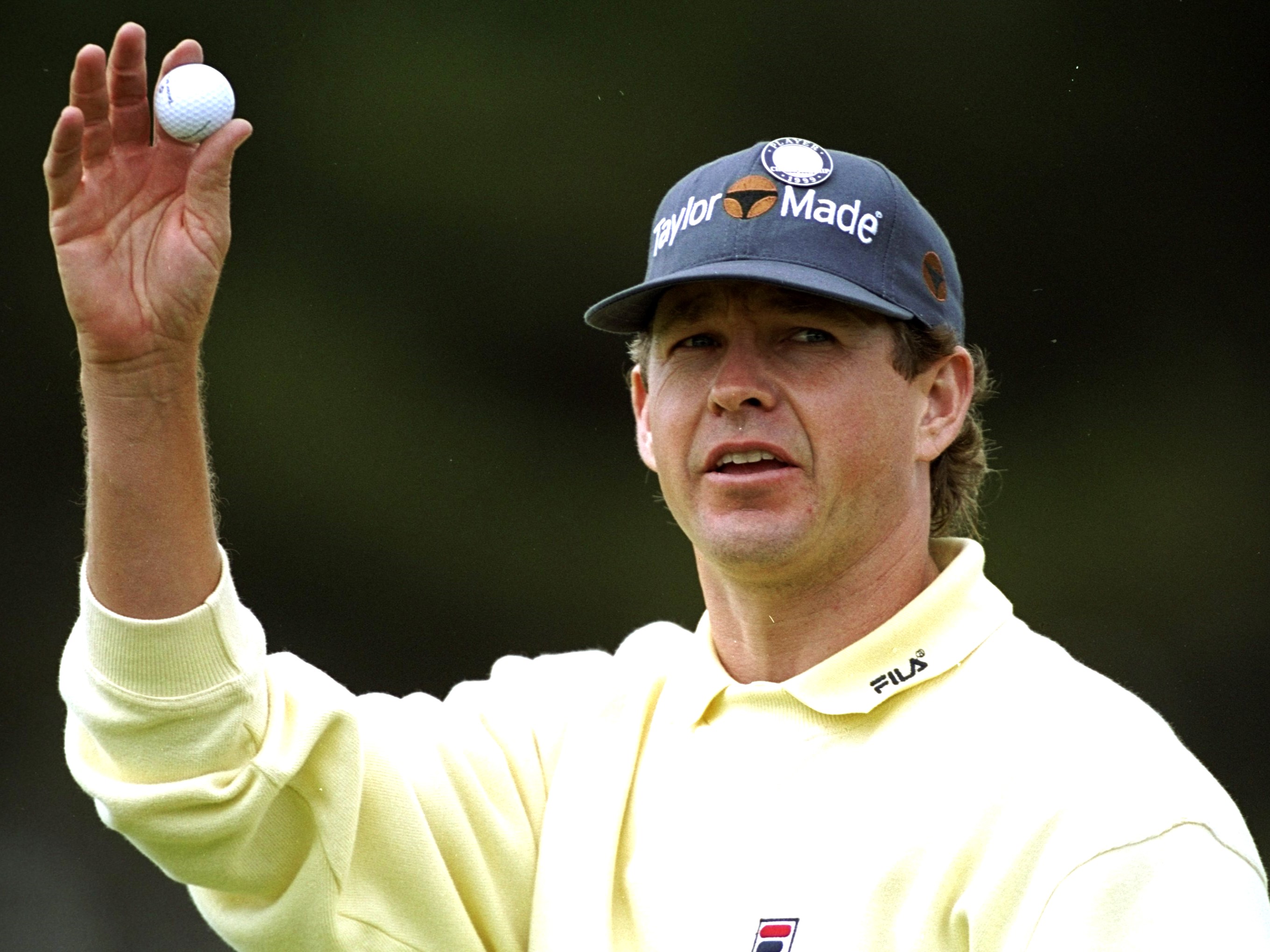
All eight of Lee Janzen’s PGA Tour wins came in the 1990s. These included his two US Open titles. He won in 1993 at Baltusrol with a two-shot margin over runner up Payne Stewart. Then, after three more top-10 finishes in Majors, he won the US Open again in 1998, at the Olympic Club, when he came back from being seven strokes off the lead in the final round. He won by a stroke, with Payne Stewart again the runner up. He also won the Players Championship of 1995.
Ernie Els
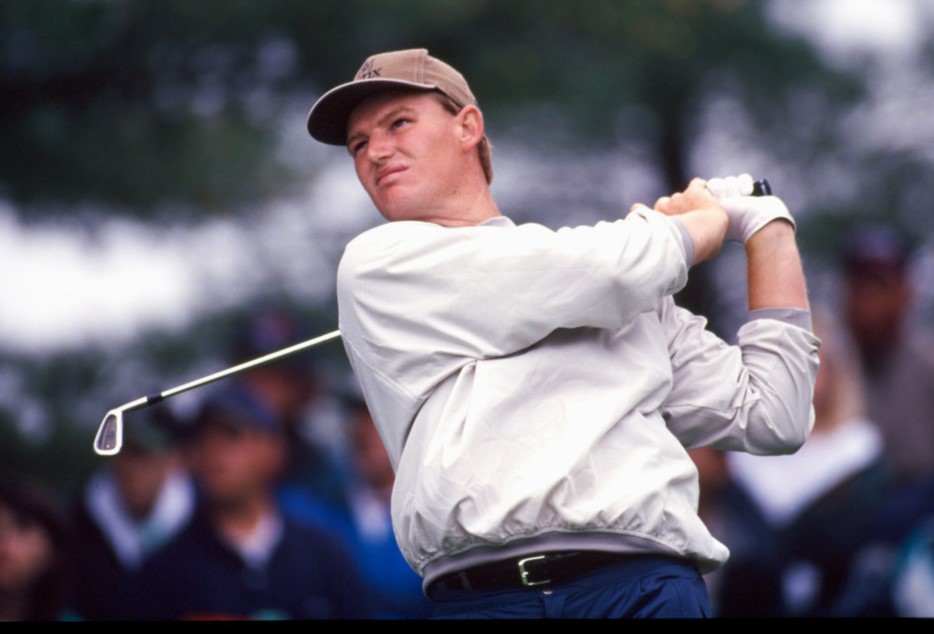
Ernie Els won the US Open twice in the 1990s. Aged 24, he triumphed at Oakmont Country Club which involved an 18-hole playoff with Loren Roberts and Colin Montgomerie. Roberts and Els tied in this so this pair continued to sudden-death holes and The Big Easy won on the second of these. Els took the US Open again in 1997 by one shot from runner-up Colin Montgomerie. Els won the Sunshine Tour Order of Merit in the 1991/92 and 1994/95 seasons. He also spent nine weeks as the World No. 1 over three different spells during this decade.
John Daly
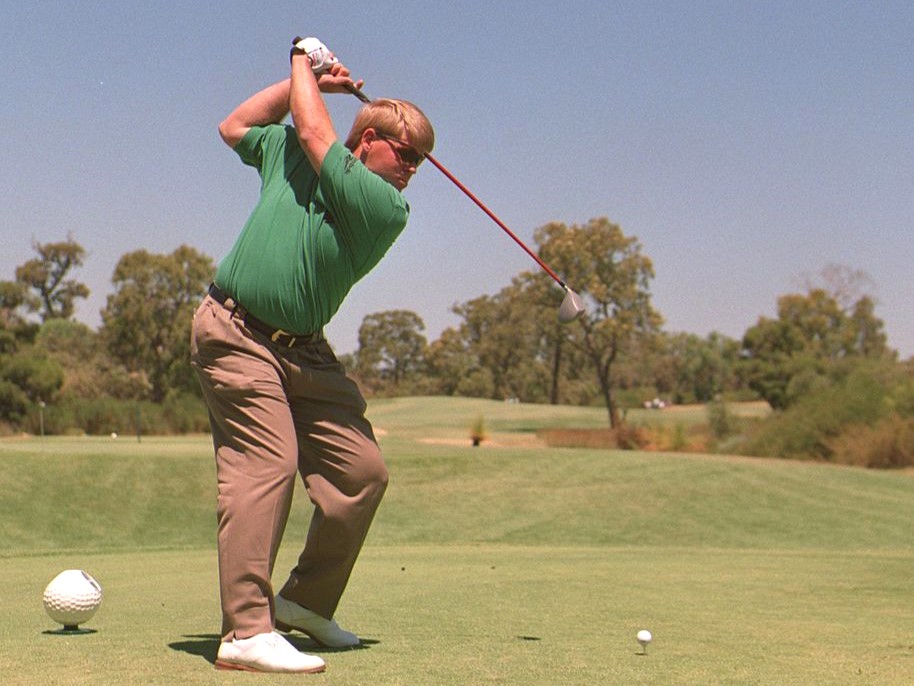
John Daly was the ninth reserve for the PGA Championship of 1991. When players dropped out, he got a place at the last minute. He had never won on tour, was not able to play a practice round to familiarise himself with the course, and only made his tee time by driving through the night. With his distinctly non country club attitude and his huge drives based on his “Grip It and Rip It” philosophy, Long John stood out – even more so when he won the tournament. He won another Major when he beat Costantino Rocca in a playoff at St Andrews in 1995.
Mark O'Meara
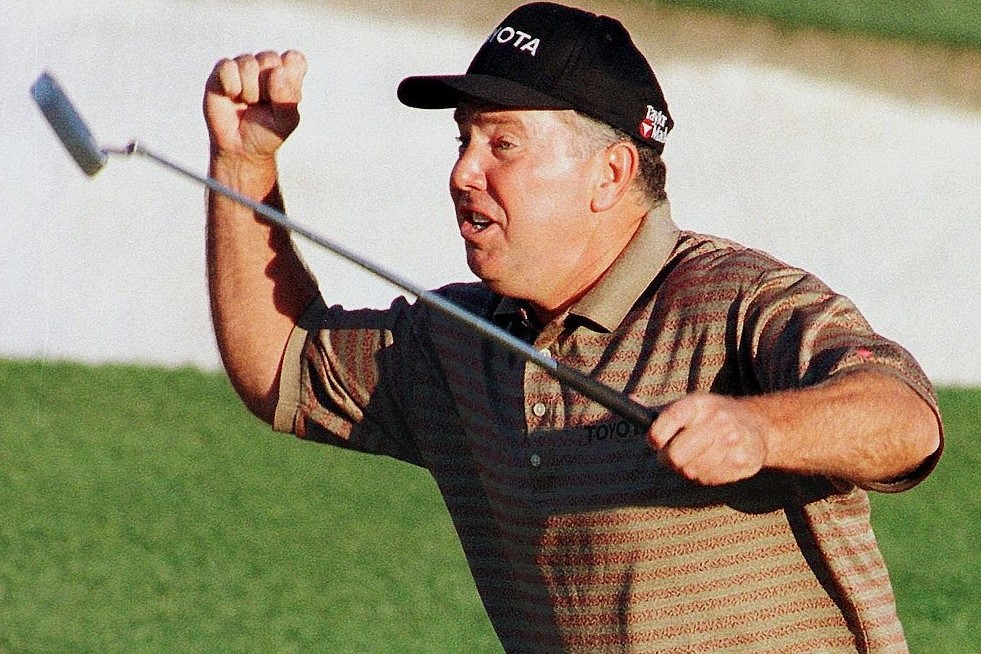
Mark O'Meara had already won 10 times on the PGA Tour, twice on the European Tour and once on the PGA Tour of Japan during this decade when he rocked up at Augusta National for the Masters in April 1998. He won that Masters, by a stroke and then, three months later, added his second Major at a wet and windy Royal Birkdale when he defeated Brian Watts in a playoff after both had played the 72 holes in level par. At 41 years old, O’Meara became the oldest man to win two Majors in a season.
Patty Sheehan
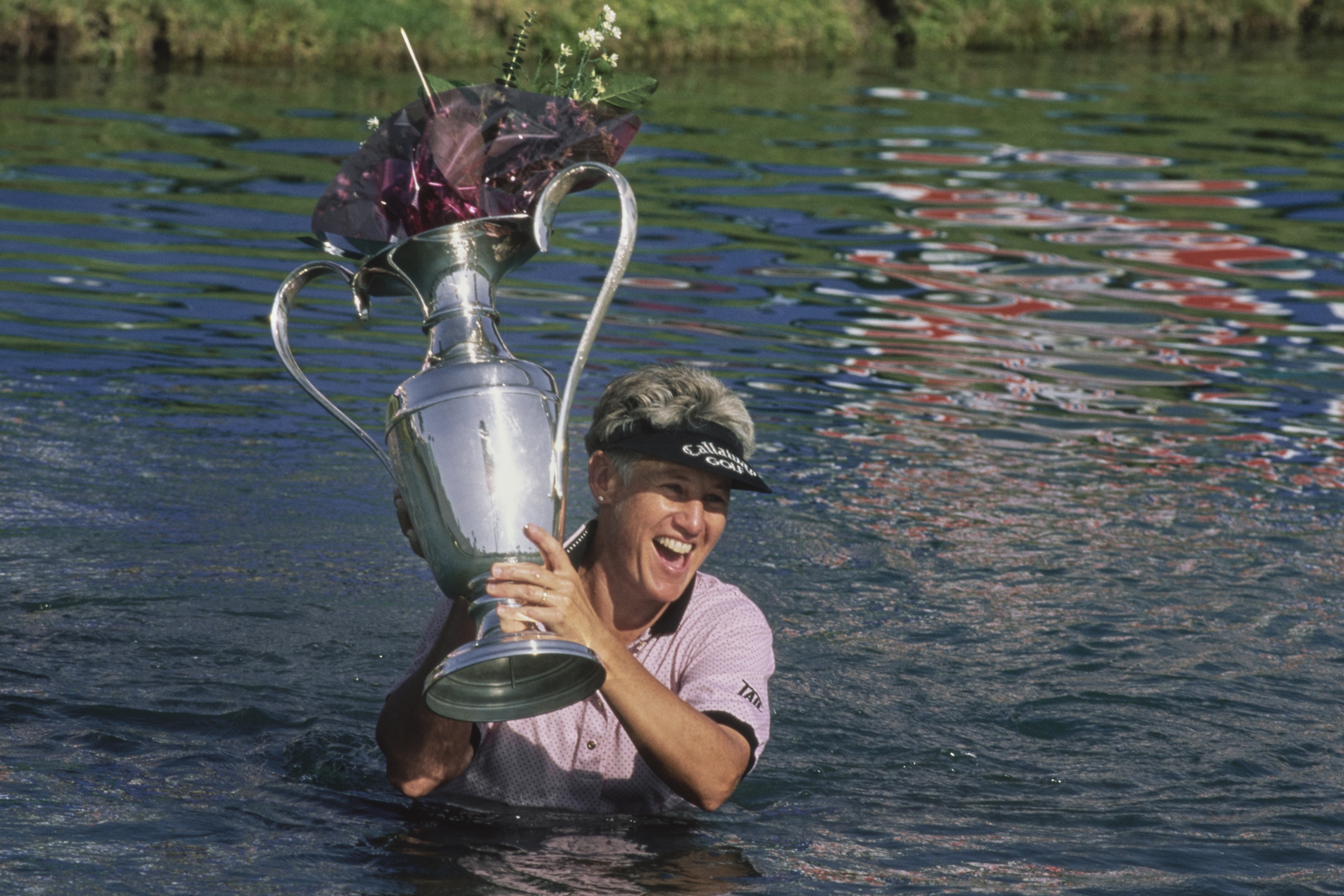
In 1992 Patty Sheehan became the first golfer to win U.S. Women's Open and the Women's British Open in the same year. However at that time the British Open was not counted as a Major, so her tally of Major wins stands at six, four of which were secured during the 1990s. It could, and should, have been five as she was leading the U.S. Women’s Open of 1990 by 11 shots at one point during the third round, but ended up losing by one shot to Betsy King.
David Duval
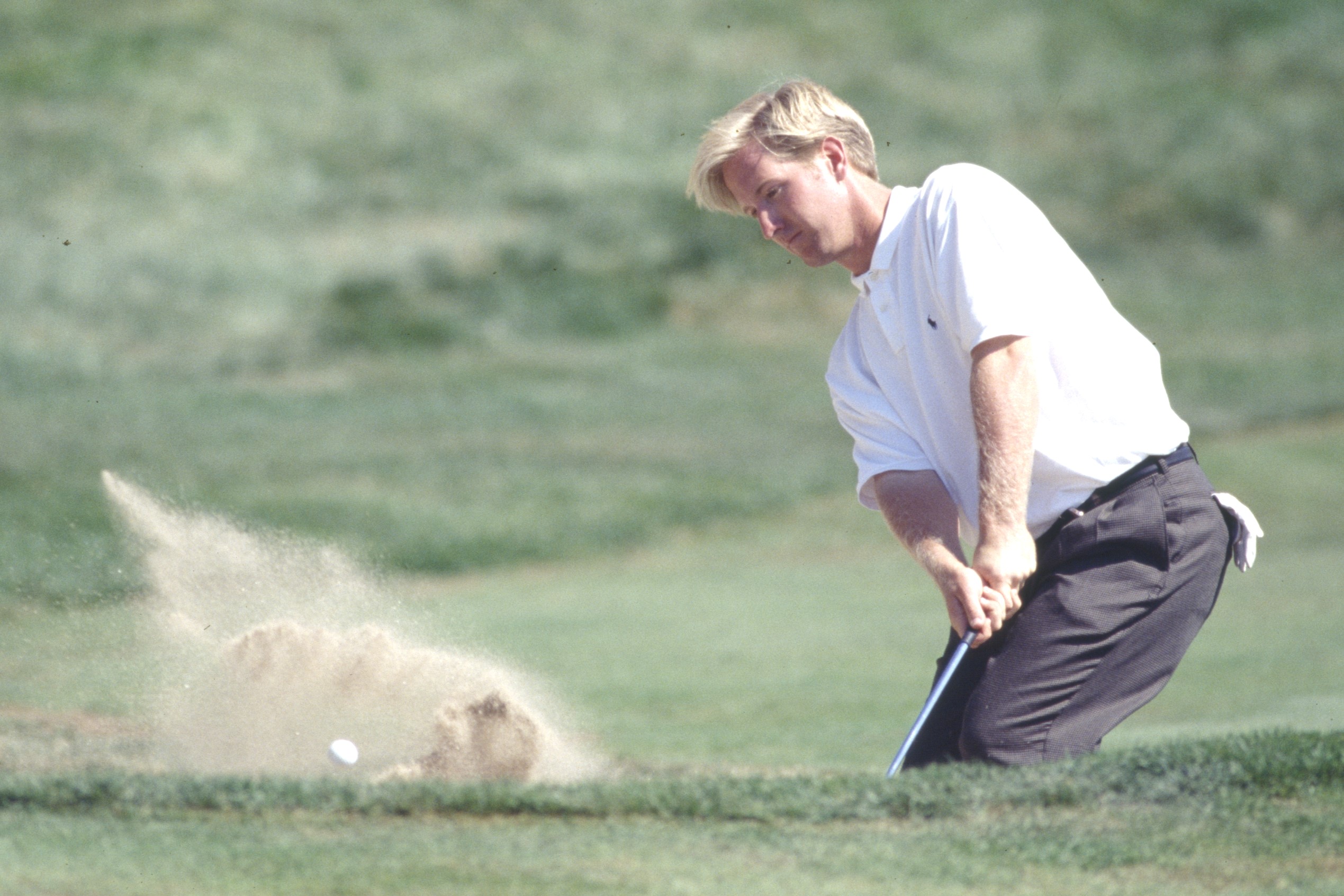
In October 1997 David Duval won his first tour events, with back-to-back victories. This set off a golden period of him when he won 11 tour events up until April 1999. These wins included the Tour Championship and The Players Championship. In 1998 he won the Vardon Trophy and Byron Nelson Award for the PGA Tour lowest scoring average. He also topped the PGA Tour money list that season. He was second to Tiger Woods on the 1997 and 1999 lists. From March 28 to July 3, 1999 he was top of the world golf rankings.
Ian Woosnam
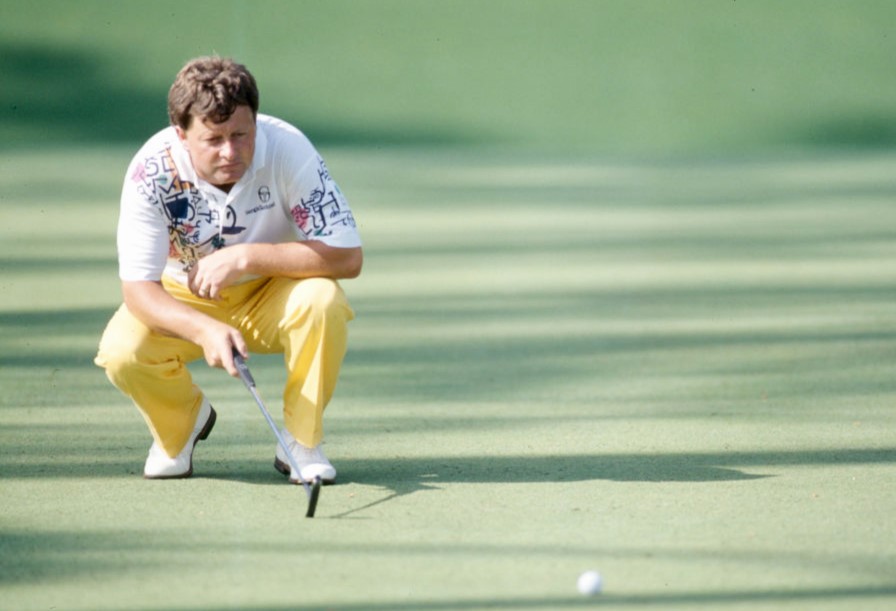
On April 14, 1991 Ian Woosnam won the Masters and on April 15 he went to No. 1 in the world golf rankings. At the Masters Woosie had been in a tie for the lead with José María Olazábal and Tom Watson coming to the 72nd hole. But the other two had bunker trouble which left Woosnam with a par putt of 6-8ft for the Green Jacket. Woosnam says: “To be world number one – when you think how many golfers there are on this planet and you are the best golfer on it. Everyone wants to win a Major. But, for me, being world number one beats my Masters achievement.”
Payne Stewart
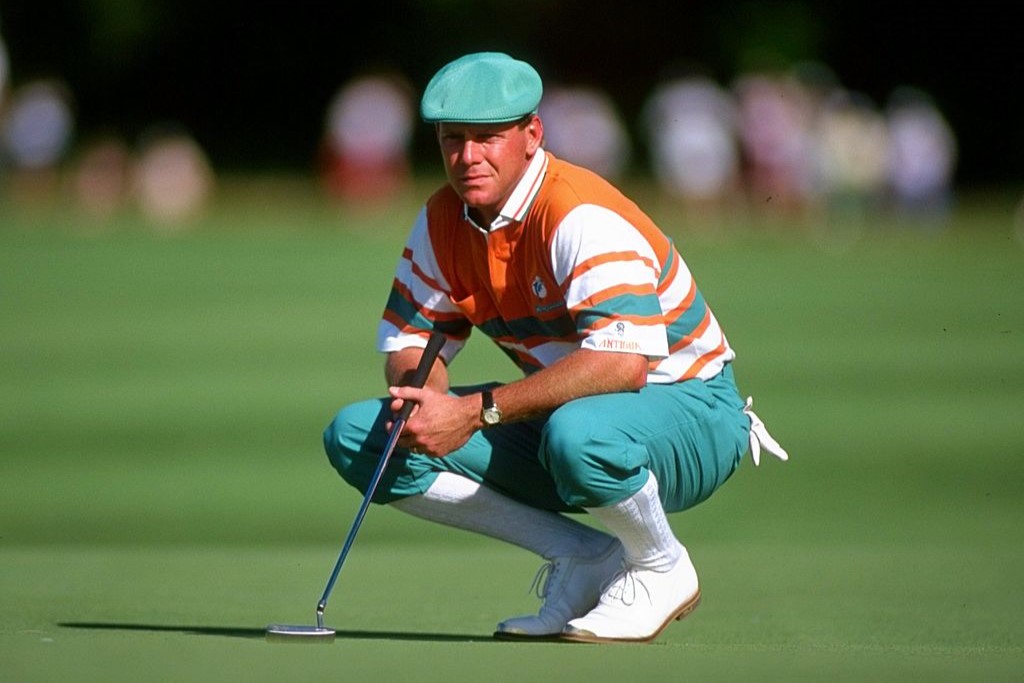
Payne Stewart won the U.S. Open in 1991 after an 18-hole playoff. At the The Open of 1993 at Royal St George’s, Stewart tied the record for the lowest round in The Open with his fourth-round 63, a record subsequently broken. In the 1998 US Open he was four shots ahead going into the final round, but ended up up losing out by a shot. The following year, at Pinehurst, he won his second U.S. Open and this third Major. A statue of him celebrating his winning putt now stands behind the 18th green.
Laura Davies
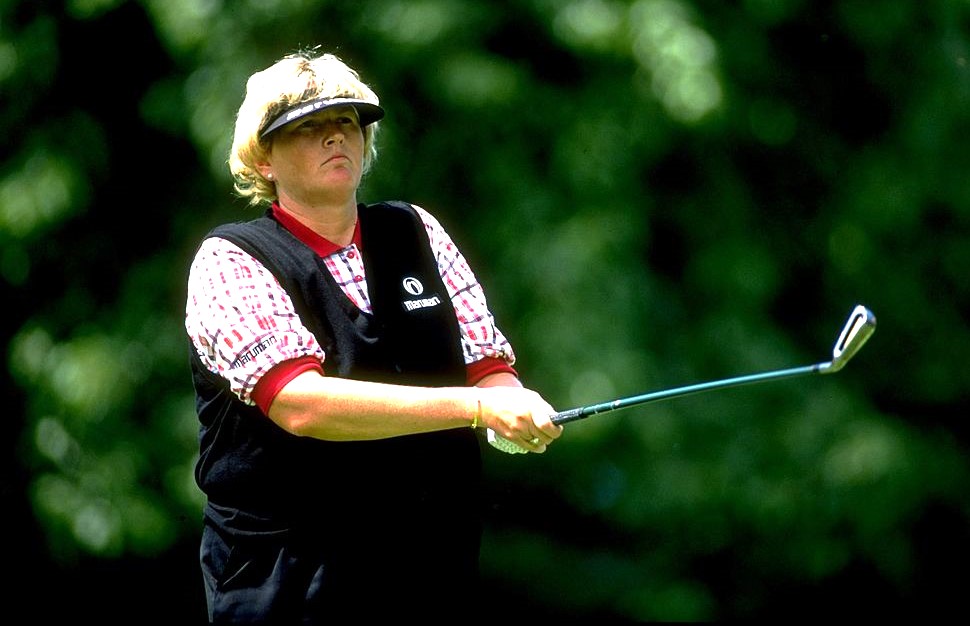
In 1994 Dame Laura Davies became the first golfer in the men’s or women’s game to win on five different tours in the same calendar year when she won in Europe, the US, Asia, Japan and Australia. But she considers 1996 to be the best year of her career as she won 10 times that year on five different tours, and won two Majors – the LPGA Championship and the du Maurier Classic. The last named was the final one of her four Major titles, which also included the LPGA Championship of 1994.
Betsy King
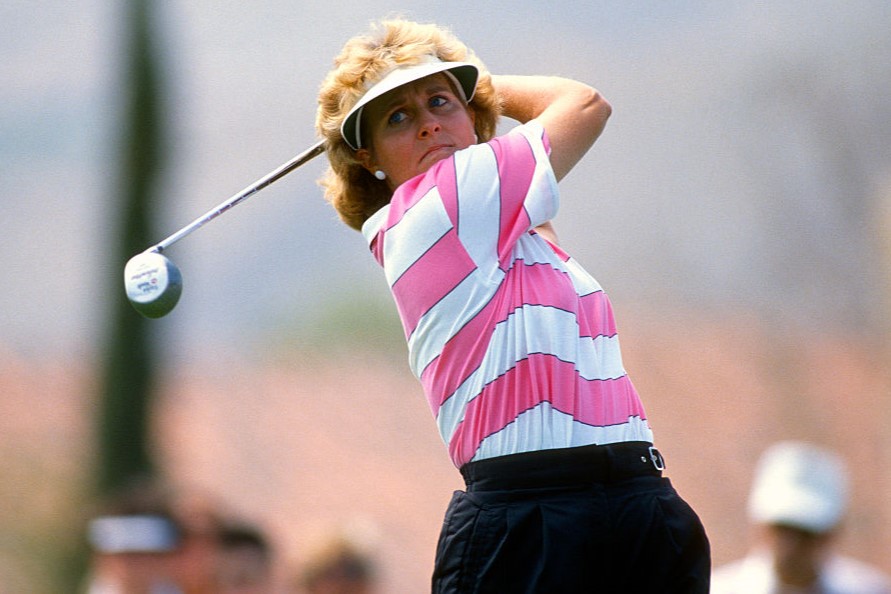
Four of her six women’s Majors titles were won in the 1990s. In 1990 she won the Dinah Shore and the US Women’s Open. In winning the LPGA Championship in 1992, by 11 shots, she recorded a 17-under 267, at the time a record low aggregate in LPGA history. Her final Major victory was the Dinah Shore in 1997. She also had 14 top-10 finishes in Majors in this decade. After retiring from competitive golf, she founded the charity Golf Fore Africa with the mission statement of “engaging the golf community to fund clean water projects in Africa.”
José María Olazábal
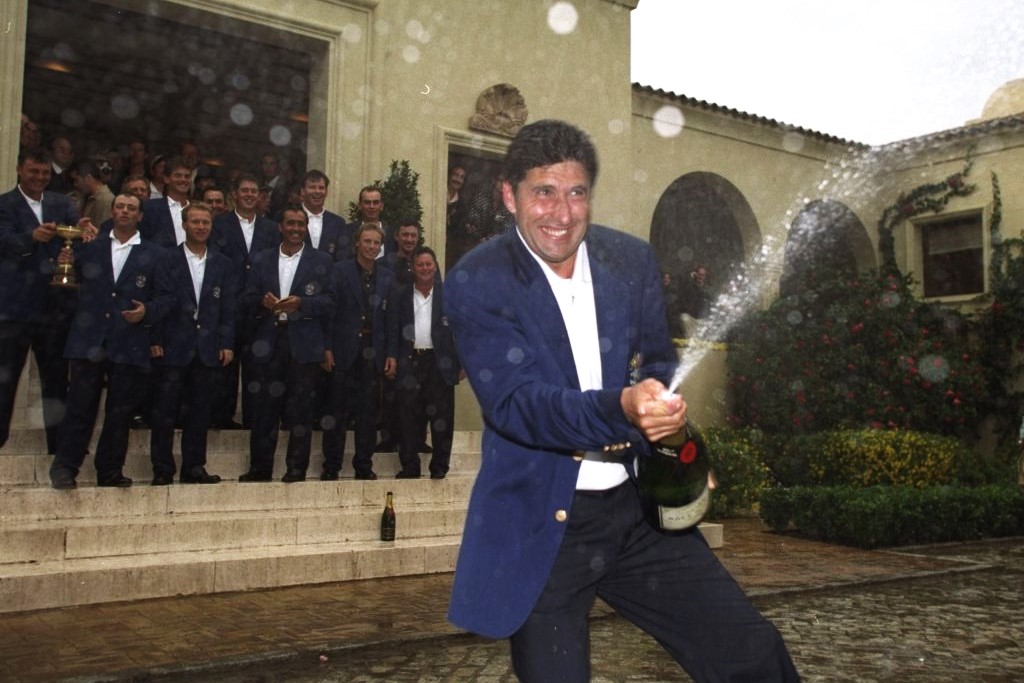
Ollie won the Masters in 1994 and 1999 having been runner up in 1991 at Augusta National. This decade also saw the last outings of his great Ryder Cup pairing with fellow Spaniard Seve Ballesteros. They played together in the 1991 and 1993 Ryder Cups, winnings 5.5 pts across their seven games. Olazábal also played in the victorious 1997 side under Seve’s captaincy, when the Ryder Cup was played in their homeland – the first time it had been played in continental Europe.
Greg Norman
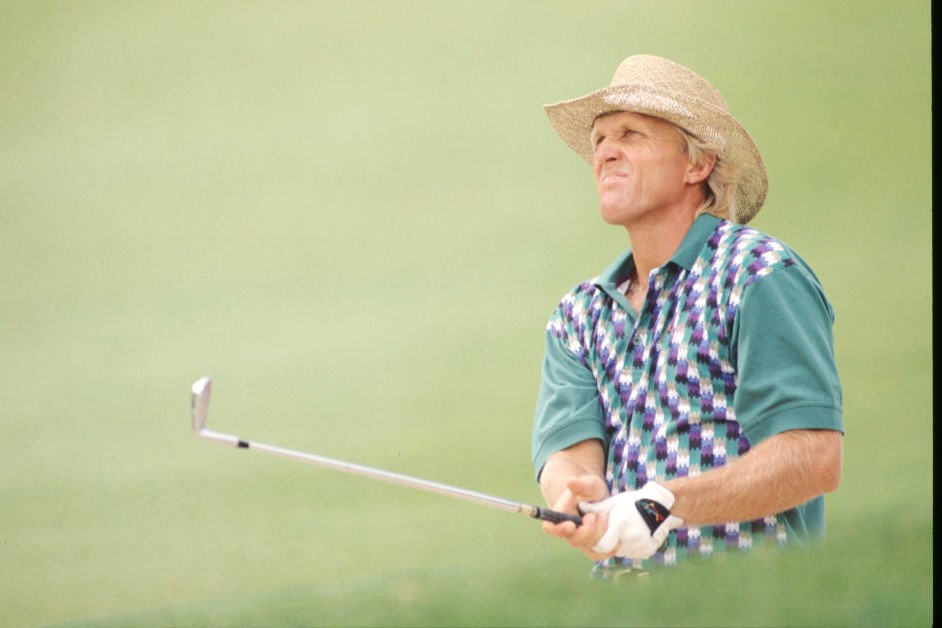
The Great White Shark spent the whole of 1996 atop the World Golf Rankings. He had moved back to top spot in June 1995 and remained there until April 1997, when Tiger Woods toppled him. In all, he spent 312 weeks of the 1990s as World No. 1. But he won only one Major in this period, The Open of 1993, and only two Majors in total. He was eight times a runner up in Majors, notorious for letting leading positions slip. At the 1996 Masters he had a six-shot lead entering the final round, yet finished second, five shots behind winner Nick Faldo.
Colin Montgomerie
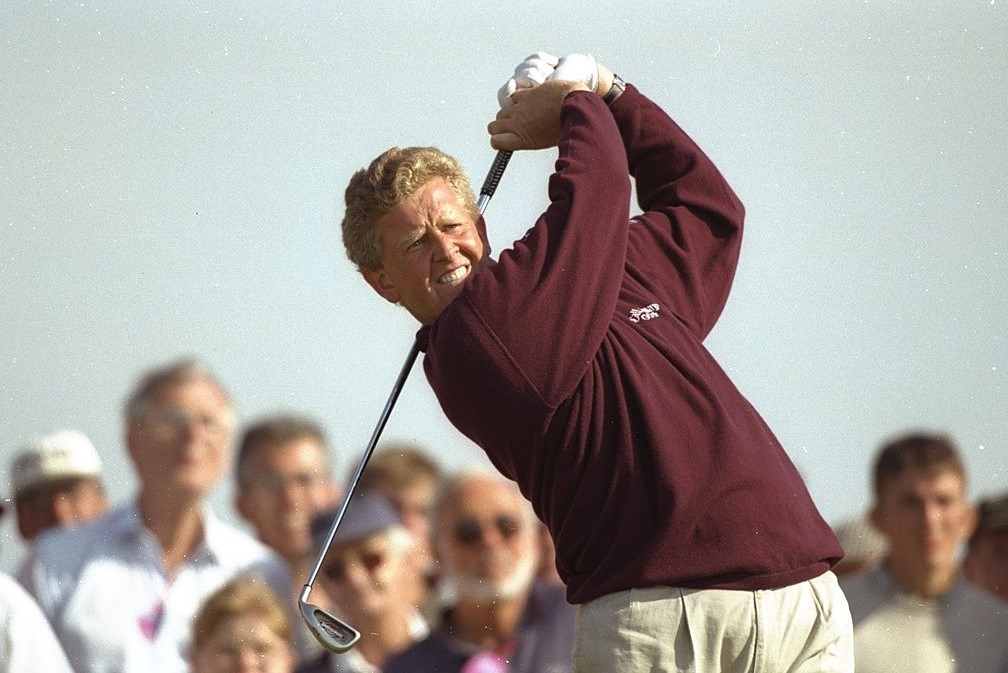
Monty dominated European golf in the Nineties. He won the European Order of Merit every year from 1993 to 1999. He won 22 times on the European Tour in this decade, but never won on the PGA Tour, nor in a Major. He lost a three-way play off for the US Open in 1994. In 1995 he set a low-scoring record at the USPGA Championship. Unfortunately for him, so did Steve Elkington, and Monty lost the playoff. He was involved in eight playoffs on the European Tour and lost seven of them; the eighth was abandoned when darkness fell.
Tiger Woods
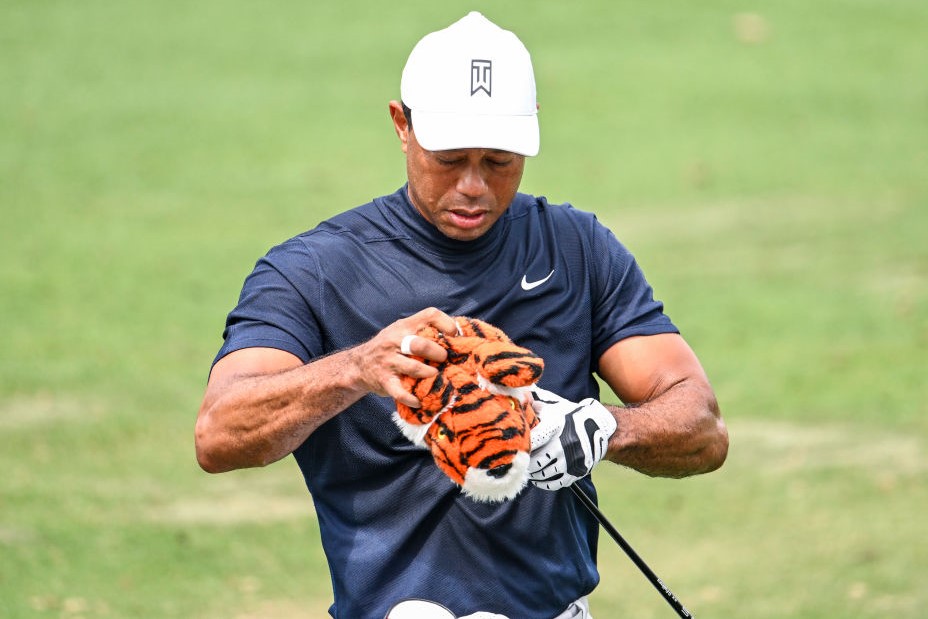
Tiger Woods had his first win on the PGA Tour in 1996, at the Las Vegas Invitational, where he beat Davis Love III in a playoff. In 1997 he came top of the PGA Tour season’s money list and won his first Major, the Masters, aged 21. Despite playing the first nine holes in four over par, he ended the tournament at 18 under and won by 12 shots from Tom Kite. In 1999 he won his second Major, the PGA Championship and again headed the season’s money list on the PGA Tour. That season he won eight times on tour.
Nick Price
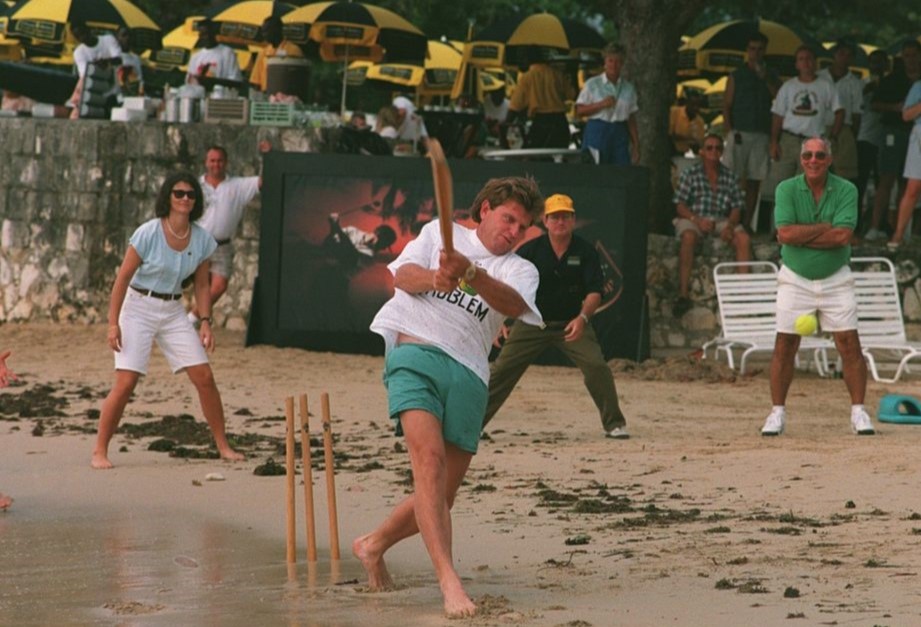
“Having been a journeyman pretty much up until 1991, winning maybe seven tournaments worldwide in 12 years as a pro, all of a sudden the floodgates opened,” says Price. In 1992 he won the USPGA Championship, and in 1994 The Open followed by his second PGA Championship, becoming the seventh golfer to capture back-to-back Majors. His success was widely enjoyed for, as Lee Trevino says, “Of all the players I know, I don't know a nicer individual. You can't find a person out there that could say a bad word about him.”
Annika Sörenstam
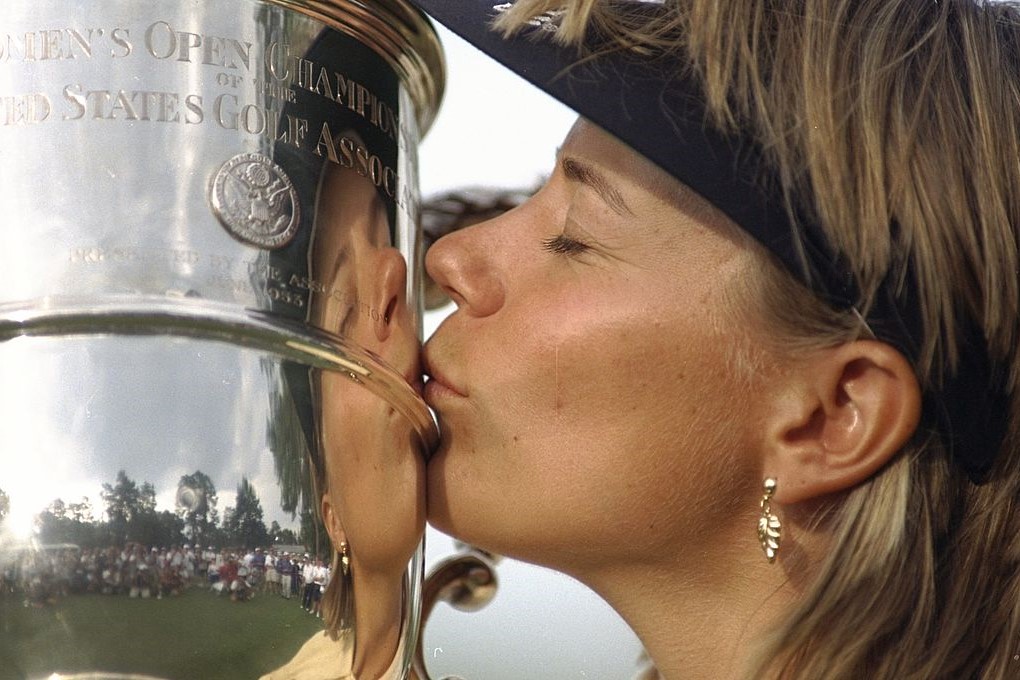
One of the best women’s golfers of all time, the Swede turned pro in 1992. She was the Ladies European Tour Rookie of the Year in 1993 and Rookie of the Year on the LPGA Tour in 1994. In 1995 she was the Ladies European Tour Player of the Year and the LPGA Player of the Year, LPGA Tour Money Winner, LPGA Vare Trophy winner and Ladies European Tour Order of Merit winner. She also won the U.S. Women’s Open that year, the first of her ten Majors in her career, and a title which she defended successfully the following year.
Nick Faldo

Sir Nick Faldo was renowned for his intense work ethic and for not buckling in tense moments on the golf course, often winning out when his opponents did exactly that. He spent 91 weeks as World No. 1 in the 1990s including an unbroken period from July 1992 to February 1994. He won four of his six Major titles during this decade – the Open Championships of 1990 and 1992, at St Andrews and Muirfield respectively, and The Masters of 1990 and 1996. He also won the European Tour Order of Merit in 1992.
Contributing Writer Roderick is the author of the critically acclaimed comic golf novel, Summer At Tangents. Golf courses and travel are Roderick’s particular interests. He writes travel articles and general features for the magazine, travel supplement and website. He also compiles the magazine's crossword. He is a member of Trevose Golf & Country Club and has played golf in around two dozen countries. Cricket is his other main sporting love. He is also the author of five non-fiction books, four of which are still in print: The Novel Life of PG Wodehouse; The Don: Beyond Boundaries; Wally Hammond: Gentleman & Player and England’s Greatest Post-War All Rounder.
